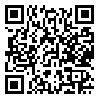Fri, Apr 26, 2024
[Archive]
Volume 17, Issue 2 (5-2013)
2013, 17(2): 0-0 |
Back to browse issues page
Download citation:
BibTeX | RIS | EndNote | Medlars | ProCite | Reference Manager | RefWorks
Send citation to:



BibTeX | RIS | EndNote | Medlars | ProCite | Reference Manager | RefWorks
Send citation to:
Rahmati M B, Nazemi A, Mirjalili S R, Moayedi A R, Zare S, Houshmandi M M. Herpes virus type 6 infection among children with Febrile Seizure, Bandar Abbas, Iran. Hormozgan Medical Journal 2013; 17 (2)
URL: http://hmj.hums.ac.ir/article-1-1827-en.html
URL: http://hmj.hums.ac.ir/article-1-1827-en.html
Mohammad Bagher Rahmati 
 , Abdolmajid Nazemi
, Abdolmajid Nazemi 
 , Seyed Reza Mirjalili
, Seyed Reza Mirjalili 
 , Ali Reza Moayedi
, Ali Reza Moayedi 
 , Shahram Zare
, Shahram Zare 
 , Mohammad Mehdi Houshmandi
, Mohammad Mehdi Houshmandi 


 , Abdolmajid Nazemi
, Abdolmajid Nazemi 
 , Seyed Reza Mirjalili
, Seyed Reza Mirjalili 
 , Ali Reza Moayedi
, Ali Reza Moayedi 
 , Shahram Zare
, Shahram Zare 
 , Mohammad Mehdi Houshmandi
, Mohammad Mehdi Houshmandi 

Abstract: (21 Views)
Introduction: Febrile seizure is a common disorder in children with an unknown etiology. Viral infection such as herpes virus type 6 (HHV-6) has been suggested. The aim of this study was to investigate the frequency of HHV-6 infection among children with febrile seizure who had referred to Bandar Abbas children hospital. Methods: A cross-sectional study conducted between 118 children aged 6 month to 5 years old without any history of epilepsy and major infectious diseases. Demographic data and family history of seizure, time of onset for febrile seizure and clinical characteristics gathered. At the beginning of the study and 10 days later a serum sample obtained. IgG against HHV-6 measured by ELISA method. Chi-square test was used to compare the frequency of risk factors in two groups of infected and non-infected patients by HHV-6. Results: 53 patients including 30 boys (56.6%) and 23 girls completed the study (mean age: 19.5±9.9 months). The HHV-6 test was positive for 23 children and the remaining 30 were negative. There were not any significant differences in frequency of major or minor risk factors of recurrent febrile seizure between two groups. 21.7% whom infected by HHV-6 vs. 1 child in negative group had longer than 15 minutes postictal phase (P<0.05). Conclusion: Forty three percent of the children with febrile seizure had infected by HHV-6. There were not any significant differences in clinical characteristics of the disease and frequency of risk factors for recurrent febrile seizure.Introduction: Febrile seizure is a common disorder in children with an unknown etiology. Viral infection such as herpes virus type 6 (HHV-6) has been suggested. The aim of this study was to investigate the frequency of HHV-6 infection among children with febrile seizure who had referred to Bandar Abbas children hospital. Methods: A cross-sectional study conducted between 118 children aged 6 month to 5 years old without any history of epilepsy and major infectious diseases. Demographic data and family history of seizure, time of onset for febrile seizure and clinical characteristics gathered. At the beginning of the study and 10 days later a serum sample obtained. IgG against HHV-6 measured by ELISA method. Chi-square test was used to compare the frequency of risk factors in two groups of infected and non-infected patients by HHV-6. Results: 53 patients including 30 boys (56.6%) and 23 girls completed the study (mean age: 19.5±9.9 months). The HHV-6 test was positive for 23 children and the remaining 30 were negative. There were not any significant differences in frequency of major or minor risk factors of recurrent febrile seizure between two groups. 21.7% whom infected by HHV-6 vs. 1 child in negative group had longer than 15 minutes postictal phase (P<0.05). Conclusion: Forty three percent of the children with febrile seizure had infected by HHV-6. There were not any significant differences in clinical characteristics of the disease and frequency of risk factors for recurrent febrile seizure.
| Rights and permissions | |
 |
This work is licensed under a Creative Commons Attribution-NonCommercial 4.0 International License. |


